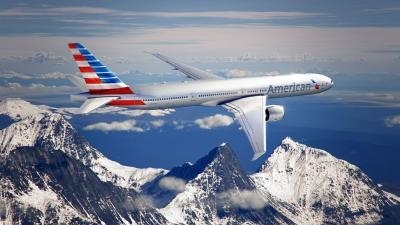Fri, Sep 12, 2014
First Mainline Carrier To Obtain FAA Approval For The Devices
American Airlines was the first airline with a paperless cockpit, and now the airline's cabins are also paperless. The airline is the first mainline carrier to provide flight attendants with electronic manuals, accessible through a handheld tablet.

"The accessibility and functionality that the tablet provides our flight attendants will greatly improve their work environment," said Hector Adler, vice president of Flight Service for American Airlines. "The tablet allows us to reduce our dependency on paper products and to share important safety information with our flight attendants more quickly. This is a very exciting and important milestone for all of us at American as we modernize our processes and provide our employees with the best tools to do their job, and provide better service to our customers."
American no longer relies on printing and shipping updates for flight attendant manuals, saving the company $300,000 annually. As a result, flight attendants can now update their manuals in a matter of minutes and search for items in seconds, improving work efficiencies. Switching to the lightweight 5.3-inch Samsung tablet from the nearly 5-lb. paper manual will save the company nearly $650,000 in fuel annually based on current fuel prices. The tablets also will help reduce the amount of carbon dioxide emissions by 2100 metric tons – or 4.6 million pounds annually.
American's flight attendants began using eManuals exclusively on Sept. 1, after a six-month test-evaluation period, with oversight from the FAA. In addition to the manual, the tablet provides real-time updates to flight attendants about premium customers, special meals, connection gates, special services and other information.
American's first flight attendant training class that trained solely on the tablet will graduate in October. The eManuals will roll out to US Airways flight attendants after the two carriers achieve a Single Operating Certificate, planned for mid-2015.
American's pilots were the first to use an Electronic Flight Bag through all phases of flight. The 1.2 pound iPad replaced a 35-pound kitbag, cutting the risk of injury and saving an estimated $1.2 million of fuel annually.
More News
He Attempted To Restart The Engine Three Times. On The Third Restart Attempt, He Noticed That Flames Were Coming Out From The Right Wing Near The Fuel Cap Analysis: The pilot repor>[...]
Make Sure You NEVER Miss A New Story From Aero-News Network Do you ever feel like you never see posts from a certain person or page on Facebook or Instagram? Here’s how you c>[...]
From 2009 (YouTube Edition): Leading Air Show Performers Give Their Best Advice for Newcomers On December 6th through December 9th, the Paris Las Vegas Hotel hosted over 1,500 air >[...]
Aero Linx: NASA ASRS ASRS captures confidential reports, analyzes the resulting aviation safety data, and disseminates vital information to the aviation community. The ASRS is an i>[...]
“For our inaugural Pylon Racing Seminar in Roswell, we were thrilled to certify 60 pilots across our six closed-course pylon race classes. Not only did this year’s PRS >[...]
 NTSB Final Report: Rutan Long-EZ
NTSB Final Report: Rutan Long-EZ ANN FAQ: Turn On Post Notifications
ANN FAQ: Turn On Post Notifications Classic Aero-TV: ICAS Perspectives - Advice for New Air Show Performers
Classic Aero-TV: ICAS Perspectives - Advice for New Air Show Performers ANN's Daily Aero-Linx (06.28.25)
ANN's Daily Aero-Linx (06.28.25) Aero-News: Quote of the Day (06.28.25)
Aero-News: Quote of the Day (06.28.25)



